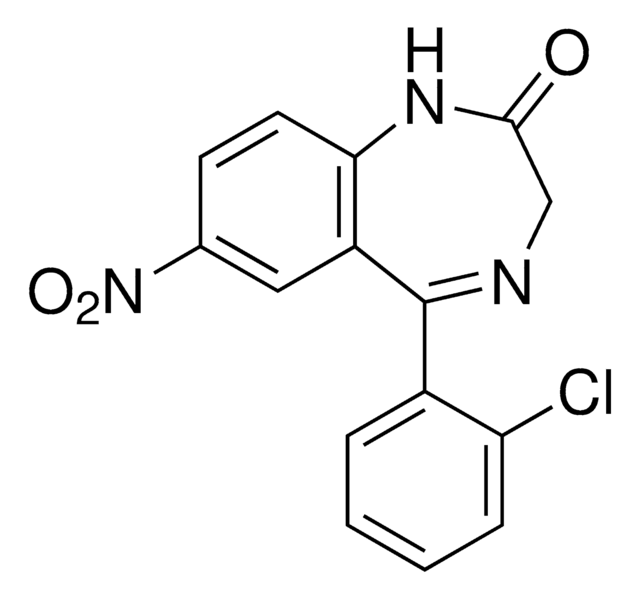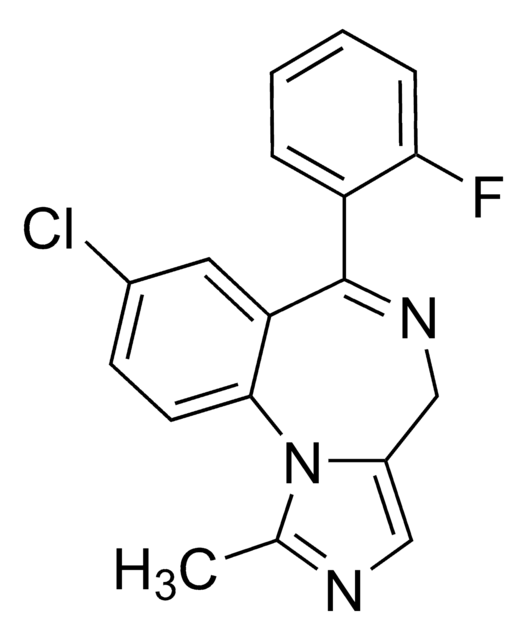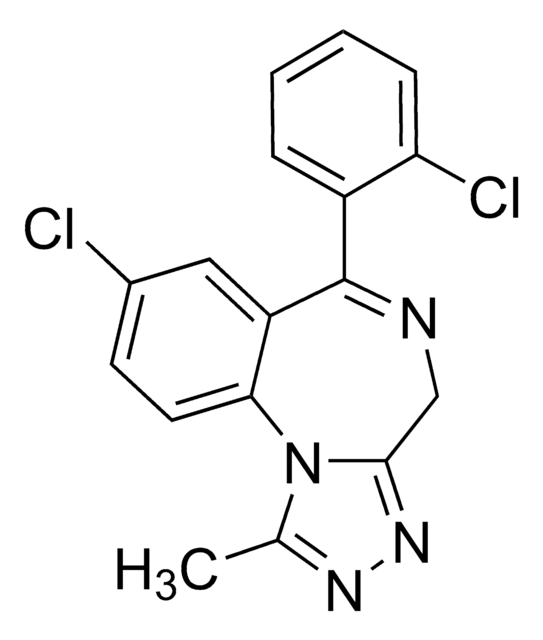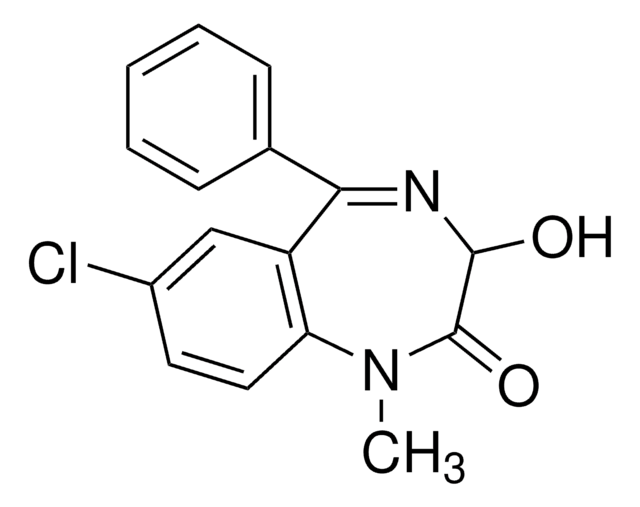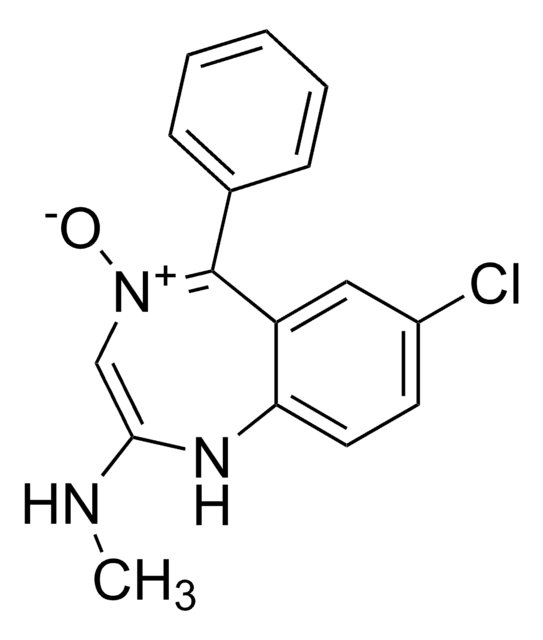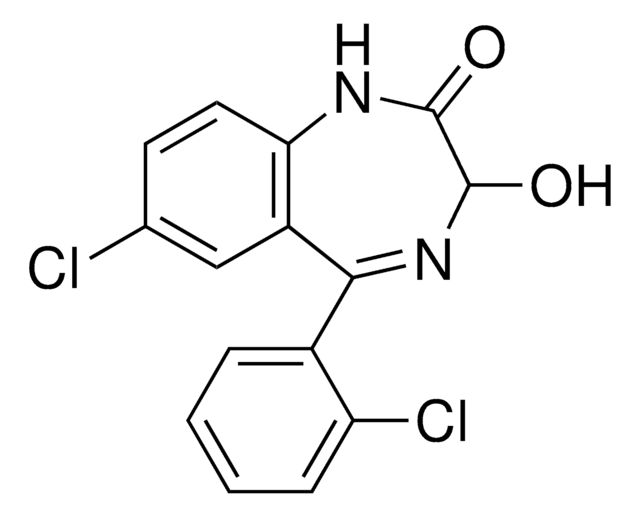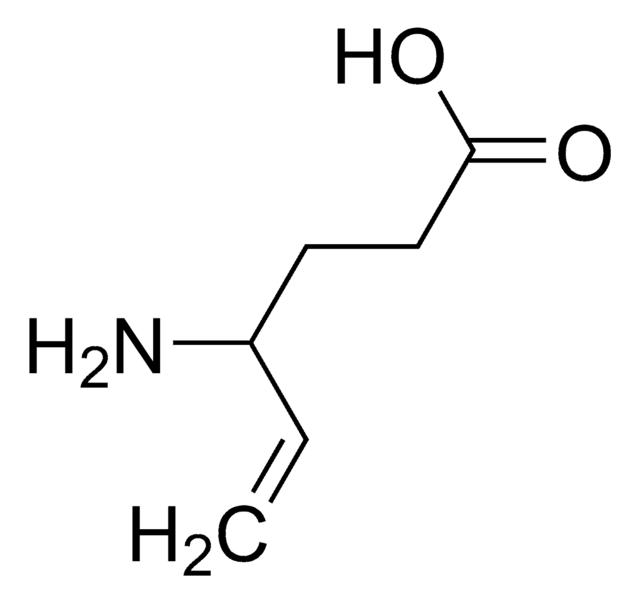Key Documents
L-901
Lorazepam solution
1.0 mg/mL in acetonitrile, ampule of 1 mL, certified reference material, Cerilliant®
About This Item
Polecane produkty
klasa czystości
certified reference material
Poziom jakości
Postać
liquid
Właściwości
Snap-N-Spike®/Snap-N-Shoot®
opakowanie
ampule of 1 mL
producent / nazwa handlowa
Cerilliant®
drug control
Narcotic Licence Schedule B (Switzerland); psicótropo (Spain); Decreto Lei 15/93: Tabela IV (Portugal)
stężenie
1.0 mg/mL in acetonitrile
metody
gas chromatography (GC): suitable
liquid chromatography (LC): suitable
Zastosowanie
clinical testing
format
single component solution
temp. przechowywania
−20°C
ciąg SMILES
OC1N=C(c2ccccc2Cl)c3cc(Cl)ccc3NC1=O
InChI
1S/C15H10Cl2N2O2/c16-8-5-6-12-10(7-8)13(19-15(21)14(20)18-12)9-3-1-2-4-11(9)17/h1-7,15,21H,(H,18,20)
Klucz InChI
DIWRORZWFLOCLC-UHFFFAOYSA-N
informacje o genach
human ... GABRA1(2554) , GABRA2(2555) , GABRA3(2556) , GABRA4(2557) , GABRA5(2558) , GABRA6(2559) , GABRB1(2560) , GABRB2(2561) , GABRB3(2562) , GABRD(2563) , GABRE(2564) , GABRG1(2565) , GABRG2(2566) , GABRG3(2567) , GABRP(2568) , GABRQ(55879)
Opis ogólny
Informacje prawne
produkt powiązany
Hasło ostrzegawcze
Danger
Zwroty wskazujące rodzaj zagrożenia
Zwroty wskazujące środki ostrożności
Klasyfikacja zagrożeń
Acute Tox. 4 Dermal - Acute Tox. 4 Inhalation - Acute Tox. 4 Oral - Eye Irrit. 2 - Flam. Liq. 2
Kod klasy składowania
3 - Flammable liquids
Klasa zagrożenia wodnego (WGK)
WGK 2
Temperatura zapłonu (°F)
35.6 °F - closed cup
Temperatura zapłonu (°C)
2 °C - closed cup
Certyfikaty analizy (CoA)
Poszukaj Certyfikaty analizy (CoA), wpisując numer partii/serii produktów. Numery serii i partii można znaleźć na etykiecie produktu po słowach „seria” lub „partia”.
Masz już ten produkt?
Dokumenty związane z niedawno zakupionymi produktami zostały zamieszczone w Bibliotece dokumentów.
Klienci oglądali również te produkty
Protokoły
-THC solution, 1.0 mg/mL in methanol, ampule of 1 mL, certified reference material
To optimize hydrolysis using β-glucuronidase, factors such as incubation time, temperature, hydrolysis pH, enzyme source, and enzyme concentration must be evaluated for each glucuronide metabolite to be analyzed.
Nasz zespół naukowców ma doświadczenie we wszystkich obszarach badań, w tym w naukach przyrodniczych, materiałoznawstwie, syntezie chemicznej, chromatografii, analityce i wielu innych dziedzinach.
Skontaktuj się z zespołem ds. pomocy technicznej
